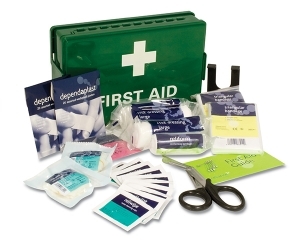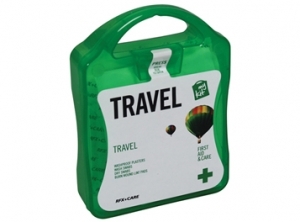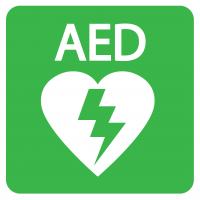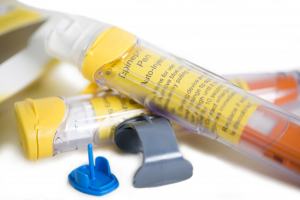 The minimum level of first aid equipment you may need is a suitably stocked first aid container. You should provide at least one container for each premises, although more may be needed on larger sites. Each kit should be stocked with enough first aid materials suitable for the particular circumstances of your workplace. First aid containers should be easily accessible and preferably placed near to hand-washing facilities. In the UK they should be identified by a white cross on a green background.
The minimum level of first aid equipment you may need is a suitably stocked first aid container. You should provide at least one container for each premises, although more may be needed on larger sites. Each kit should be stocked with enough first aid materials suitable for the particular circumstances of your workplace. First aid containers should be easily accessible and preferably placed near to hand-washing facilities. In the UK they should be identified by a white cross on a green background.
First Aid Kit Contents
There is no mandatory list of first aid kit contents, however the following items are suggested as a minimum. The decision on any extra items should be influenced by your first aid needs assessment, that is the level of risk and the number of staff/visitors you have. First aid kit ‘refills’ purchased in the UK, should meet HSE standards and will probably contain the following:
- a leaflet giving general advice on first aid
- disposable latex-free gloves
- sterile wound dressings, medium & large
- low-adherent dressing pads
- Burn dressing*
- individually wrapped, sterile plasters of assorted sizes
- sterile eye pads
- finger dressings
- individually wrapped triangular bandages
- conforming bandages
- hypoallergenic adhesive tape
- sterile wipes (must be antiseptic free for paediatric kits)
- saline / eye wash solution**
- safety pins
- resuscitation face shield
- scissors
- foil blanket
*It is recommended that a ‘Burns First Aid Kit’ is available in any working kitchen.
** Certain environments e.g those using chemicals must have an eye wash station in addition to any first aid facilities.
First Aid Kit Maintenance
The contents of a first aid kit should be checked regularly and restocked as soon as possible after any use. Enough spare stock should be kept on site and expired items disposed of as they may no longer be sterile*. First aid kits should only be stocked with items useful for giving first aid and should be protected from dust and damp.
Your needs assessment may identify that you need additional materials and equipment e.g eye wash solution or an AED. These may be stored separately. There may also be a need for personal protective equipment in case first aiders have to manage hazards. Such items should be stored securely near the first aid facilities and be easy to find. If mains tap water is not readily available, still bottled water could be used instead.
* Defibrillator (AED) pads will dry out and lose their adhesive after expiry.
Mobile Workers

Where staff have to travel between sites or jobs during their working day, employers should consider providing travelling first aid kits for lone workers. These can be fitted to business vehicles. You should also consider whether these employees should be trained in Emergency First Aid, particularly if they are involved in high hazard activities.
Defibrillators

A defibrillator or (AED) can increase a person’s chance of survival by nearly 75% if used promptly and in conjunction with CPR. Where an employer decides to provide an AED in the workplace, someone should take responsibility for looking after it. Anyone who may need to use it should be trained to ensure they have sufficient knowledge and are confident in its use. This may be your workplace first aider and AED use is now a mandatory part of all formal first aid training. We can advise on the purchase of AED devices and accessories and also offer group training for businesses on AED maintenance and basic life-support.
Medication

First aid at work does not include giving tablets or medicines to treat illness. The exception to this is aspirin, which may be appropriate for a conscious, adult casualty over the age of 16, suspected of having a heart attack. This is in line with currently accepted practice. Aspirin can have severe complications, it should never be given in the event of a suspected stroke or if you are in any doubt that the casualty is safe to take it. Always take advice from emergency services staff.
No medication, including aspirin should be stored in the first aid container. Employees may need to carry their own medication e.g an asthma inhaler, insulin or adrenaline auto-injector. If an individual needs to take their own prescribed medication, the role of the first aider is to assist them to do so and pass this information on to the Emergency Services.
